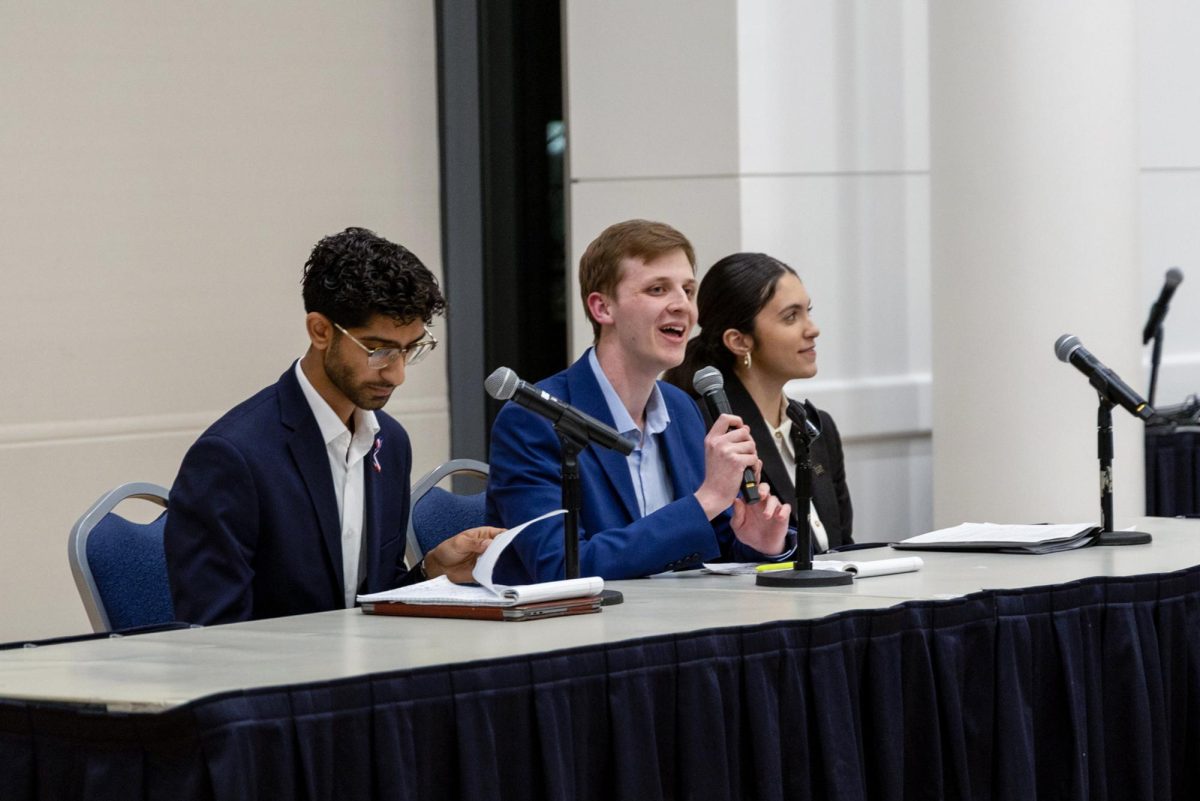The School of Media and Public Affairs kicked off a new Broadcast Summer program two weeks ago, which offers students a comprehensive package of popular SMPA courses at a discounted rate. The 10-week, 12-credit program focuses on most aspects of broadcast journalism, including scriptwriting, production and filming.
The idea for the Broadcast Summer was derived from student response to surveys that expressed a high interest in broadcast and production courses, SMPA officials said.
The 13 students enrolled in the summer session attend four classes per week, and work closely with CNN television show “Crossfire” executives. At the end of the summer, SMPA students will have filled a few of their graduation requirements, including introductory course SMPA 50.
“These are real, traditional courses,” said Albert May, interim director of SMPA. “It’s a fairly heavy load for students to take over the summer, but it meets the needs of the heavy demands for SMPA classes.”
The program boasts a reduced rate of $6,000 for four classes, and offers unique courses taught by full-time SMPA faculty as well as two adjunct professors who are professionals in the public affairs field. Tuition for one semester for a full-time student in the SMPA costs $14,395. During a semester, students can take up to 17 credits.
One course, TV Talk: An Introduction to Washington Public Affairs Programming, is taught by Sam Feist, senior executive producer at CNN. The seminar-style class includes a weekly lab in which students shadow a different member of Crossfire’s production staff, from director to cameramen, during the show.
Feist was unavailable for comment throughout the week.
“The students are getting a first-hand perspective on the roles and responsibilities of production,” “Crossfire” coordinating producer Heather Clapp said. “We got the impression from GW students that they wanted to be more involved in ‘Crossfire.'”
Nightly assignments include watching “Crossfire” and NBC’s “Meet the Press,” and written exercises such as brainstorming possible program topics and likely guests.
“The workload is structured to give us hands-on experience, so most of the work doesn’t feel like typical schoolwork,” said junior Brian Darmanin, an electronic media major enrolled in the program.
Other course offerings include Broadcast News Writing and Television, Politics and Public Affairs, designed to teach writing, production and theory. Although the program requires students to enroll in all four classes, reactions were mostly positive.
“I feel the organizers of this program have done an incredible job at integrating all of the classes to complement each other,” Darmanin said. “It feels like one cohesive unit, rather than four separate classes.”
Junior Natalie Apsell said she decided to enroll in the summer session, despite being a psychology major. The majority of students in the Broadcast Summer session are enrolled in the SMPA, with two psychology majors and two who are undeclared.
“I took two electronic media courses this past semester and realized how much mass media affects American culture,” she said.
Class sessions are an hour and forty-five minutes long. Most students said the length, as well as the small class size, makes the learning experience more intensive.
“The classes are somewhat long, especially in the morning. But I think they are better because as a student, it makes me really commit to what I am doing.” Apsell said. “With a longer class period, I felt that the professors are really there to teach me something and to guide my thinking, rather than just showing up for class.”
The department is planning a full evaluation on the program’s completion at the end of the summer, May said. He said he anticipates a positive reaction.
“Based on what I’ve seen so far, there’s no reason to think we won’t offer something similar in the future,” he said.






